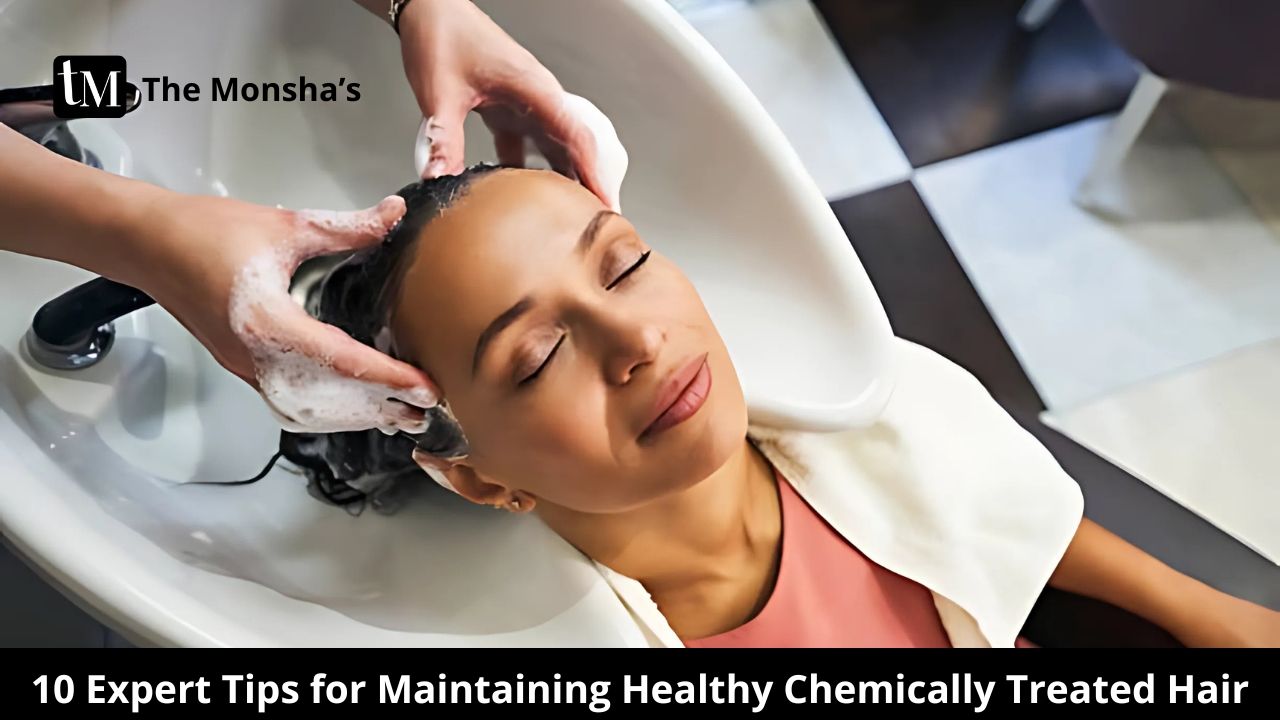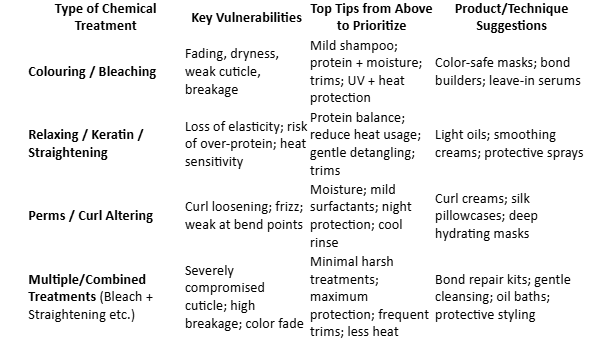
If your hair has been through color, bleach, perm, relaxer, keratin—first, I feel you. Chemically treated hair demands extra love or else it gets dry, brittle, frizzy, and sad. But done right, it can shine, bounce, and last strong. Here are ten tips (not fluff) that really help.
What to do: Go for shampoos with gentle surfactants—not the harsh ones that strip everything out. Lower detergent strength, mild lather.
Why it helps: Chemicals already weaken the cuticle and cortex; harsh sulfates open up cuticle too much, lead to more moisture loss, faster color fade, more damage. Research shows treated hair retains more protein and moisture when cleansed with milder surfactants.
When & how often: Wash only as frequently as needed (scalp oil, sweat). Maybe every 2-3 days for some; others with dry scalp fewer times. Alternate with gentler cleansing versions.
What to do: Use deep masks / bond builders that penetrate inside hair shaft (look for “bond repair,” hydrolyzed keratin, etc.).
Why it helps: Chemical treatments break internal bonds (like disulfide bonds), which makes hair weaker. Deep conditioners + bond repair treatments help rebuild some of those internal structures. Studies show that small proteins & moisture retention agents restore strength in chemically damaged shafts.
When & how often: Once a week or every wash depending on damage. Use a heavier treatment after color / straightening. Leave it on for the time directed (often 10-20 mins or with heat if possible).
What to do: Don’t overdo either—your hair needs both. Use protein treatments when hair feels mushy or limp, and moisture treatments when hair feels dry, straw-like, or squeaky.
Why it helps: Too much protein without moisture = stiff, brittle hair. Too much moisture without protein = limp, weak strands. Experts emphasize “protein vs moisture balance” as essential for chemically processed hair.
When & how often: Maybe protein every 2-3 weeks; moisture masks more often or in between. Watch hair reactions to decide.
What to do: Always use a heat-protectant before blow-dries, straighteners, curling. Limit hot styling. Wear hats or UV sunscreen sprays when out in sun. Also guard against chlorine/salt water.
Why it helps: Chemicals have already opened up hair cuticle, reducing strength and making hair more fragile under heat/sun. Additional stress leads to breakage, color fade, dryness.
When & how often: Every time you use heat. If you swim or sunbathe, wash afterward + recondition.
What to do: Get regular trims just for ends—even if you’re growing hair, snip damaged tips.
Why it helps: Split ends travel up the hair shaft, making treated areas look ragged, dull, and frizzier. Removing those helps hair appear healthier and avoids worse breakage.
When & how often: Every 6-8 weeks roughly, depending on how severely damaged your ends are.
What to do: Choose leave-ins, serums, oils, creams that help seal moisture, reduce frizz, add slip. Avoid heavy alcohols, strong drying ingredients, or overly stiff gel/rigid heat tools.
Why it helps: Styling products are used frequently. Poor ones undo all the care you did: they open cuticle, strip oils, cause breakage.
When & how often: Use protective or supportive stylers whenever styling. Lighter ones for everyday; heavier ones for special styles (night out, shoots).
What to do: Detangle with fingers or wide-tooth comb, especially when hair is wet + conditioned. Avoid harsh brushing, tight bands, rough towels.
Why it helps: Chemically treated hair is weaker; mechanical stress is a huge cause of breakage. Recent reports say brushing when wet but not supporting the hair makes protein structure be compromised more.
When & how often: Always be gentle from wash through styling. Use silk or soft materials, gentler brushings.
What to do: Wash with warm water (not hot); final rinse cooler (if possible).
Why it helps: Hot water lifts cuticle; cool water helps seal it, locking in treatments, reducing frizz, increasing shine.
When & how often: Every wash. Always end rinse with a cool splash.
What to do: Keep scalp clean, use mild exfoliation or scalp treatments if oil or dandruff issues; massage scalp to boost blood flow.
Why it helps: Healthy scalp promotes healthier hair growth; blocked follicles or flakiness can worsen how treated hair looks/behaves.
When & how often: Monthly or as needed; massage a couple of times a week when applying conditioner or oils.
What to do: Sleep on silk or satin pillows/carriers; loosely tie hair; use leave-in serums or oils to reduce friction overnight.
Why it helps: Friction causes breakage, splits, especially in chemically treated weak areas. Overnight moisture helps treatments settle.
When & how often: Every night. At least use silk/satin protection; heavier treatments overnight once or twice a week if hair tolerates.

You don’t have to (and shouldn’t) pile on ten new products or go overboard. Pick 2-3 tips from above that fix your worst issues right now—maybe protein + mild shampoo + trims—and build from there. And yes, even chemically treated hair can be strong, shiny, easy to style. Treat it with respect, give it the right support, and it’ll thank you by not snapping in the wind 😉.